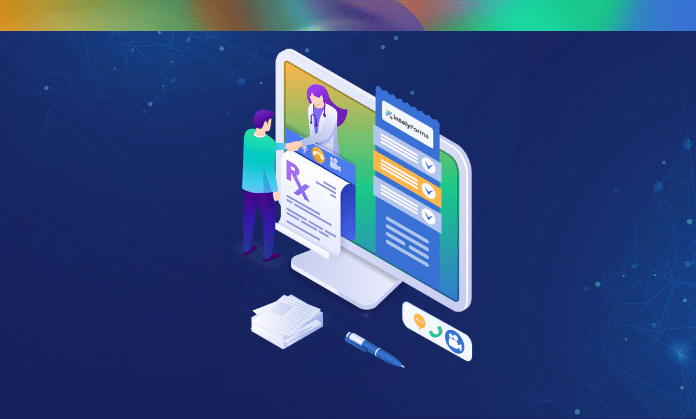Automated analytics workflow is one of the most confusing yet vital aspects of any web project. There are many different sources for tracking information, and numerous ways to measure conversions, view traffic flow, set up goals, and create reports & charts.
Working with analytics can be a lot to take in when you start. But moreover, they’re suitable for any sized business regardless of location and industry. Automated analytics workflows allow you to get early insights into your site’s performance.
intelyConnect is here to solve all analytics problems with the best solution to automate your analytics workflow. So let’s cover in this blog automated analytics workflow.
What is an automated analytics workflow?
Automated Analytics Workflows is a step-by-step guide to setting up your own automated data workflow using Google Analytics and Google Sheets. It allows you to set up your reporting process each week dynamically.
It also maintains a perfect balance between speed and accuracy in generating your weekly reports. Automated analytics workflows are perfect for companies who want to become analytically aware but don’t have the budget to hire full-time staff.
Why is it important?
Automated analytics workflows integrate your daily routines into your company’s operations, thus saving time and money. It represents a strategy that replicates the small tasks performed manually to ensure key performance metrics.
Using an automated approach will enable you to focus more on those activities that require your interaction.
How does the US healthcare system use automated analytics workflows?
Automating analytic workflows thereby provides more accurate measures of patient treatment compliance and more efficient use of medical professionals’ time by improving the quality and efficiency of medical diagnoses.
Improvements in US healthcare:
Yes, it is possible because of automated analytics workflows. But, first, let’s cover what kind of criteria the US improve its healthcare systems:
Transitioning to a value-based system:
As you may be aware, the United States has just started transitioning to a Value-Based Care System (VBC). VBC is the premise underpinning the payment system in the United States, as you presumably already know.
As a result, it implies high-quality care at a cheap cost for patients; CBC is gradually being displaced by Value-Based Payment.
By the end of 2018, 90 percent of all regular CBC Medicare payments should be connected to quality or value, with the remaining 50 percent tied to alternative payment models.
Care coordination requires data analytics:
These major developments demand more national and federal cooperation between payers, providers, and fiscal intermediaries.
This new interoperability aims to build a unified system in which data flows from payer to provider, resulting in better treatment and lower costs.
The focus on care coordination and collaborative leadership across networks are the main tenets of this organization. In addition, the utilization of big data analytics is a critical component of responsible care’s success.
A significant limitation: Interoperability:
Healthcare in the United States, on the other hand, is highly fragmented. As a result, hospitals have a slew of proprietary tools, fragmented systems, and outmoded techniques, wasting time and money.
Consider printing datasets on paper and walking across the street to transcribe them into another hospital’s system. In the United States, one probable explanation is that there were 779 health IT suppliers in March 2015.
The majority of them offer self-contained systems or computer systems purposely siloed. That’s why, on average, a US hospital will have ten separate Electronic Health Records. As a result, data use and exchange are far from ideal.
What intely do for the healthcare system?
- Healthcare providers and payers should concentrate on what matters most: providing the greatest possible patient care at the lowest possible cost.
- intelyConnect can clean, combine, and convert data from various health IT systems. It also gives your business analyst teams more time to work on new projects.
- intelyConnect enables its customers to maximize service value through fraud detection, staffing optimization, physician profiling, process improvement, churn reduction, and predictive maintenance.
- We also enable no-show forecasting, predicting doctor drug prescriptions, and developing indicators using healthcare data in a market where VBC is the dominant paradigm.
- We assist healthcare practitioners in optimizing illness management, improving patient safety, and expanding the possibilities for precision medicine, allowing them to give better treatment.
- intelyConnect may assist any healthcare actor in generating health knowledge and awareness to improve consumer involvement, create sophisticated population health management, and promote openness.
Benefits of automated workflow:
Improve efficiency:
Simplifying task processes is made easier by automating internal procedures. In addition, the number of human contact points is minimized, enhancing efficiency by completing functions in a short amount of time utilizing human intelligence.
Increased productivity:
Once company procedures are automated, teams no longer have to waste time executing repeated tasks or waiting for clearance from senior management. In addition, it can monitor the processes and their progress in real-time, which aids in better time management and increased productivity.
Audibility:
Workflow automation automates answers, reducing response time in the case of follow-ups or status updates. In addition, it enhances communication and collaboration across various teams in various areas inside the company.
Improved accountability:
Workflow automation improves responsibility by defining distinct duties and assigning each team member steps to follow. As a result, employees are more accountable for their involvement in a certain process.
Conclusion:
After looking at the automation tools available, we’ve started to establish a workflow that makes it easier for us to use data from our automated tasks in other business areas.
In the end, that’s why analytics is so helpful; if you can find a way to restructure your workflow to make them easy to use, it opens up all sorts of possibilities for your business. intely Connect helps you manage your analytics workflows and automate your healthcare data within a less time-consuming process with the best applications. Connect with our technical team to know more about automated analytics workflows.



